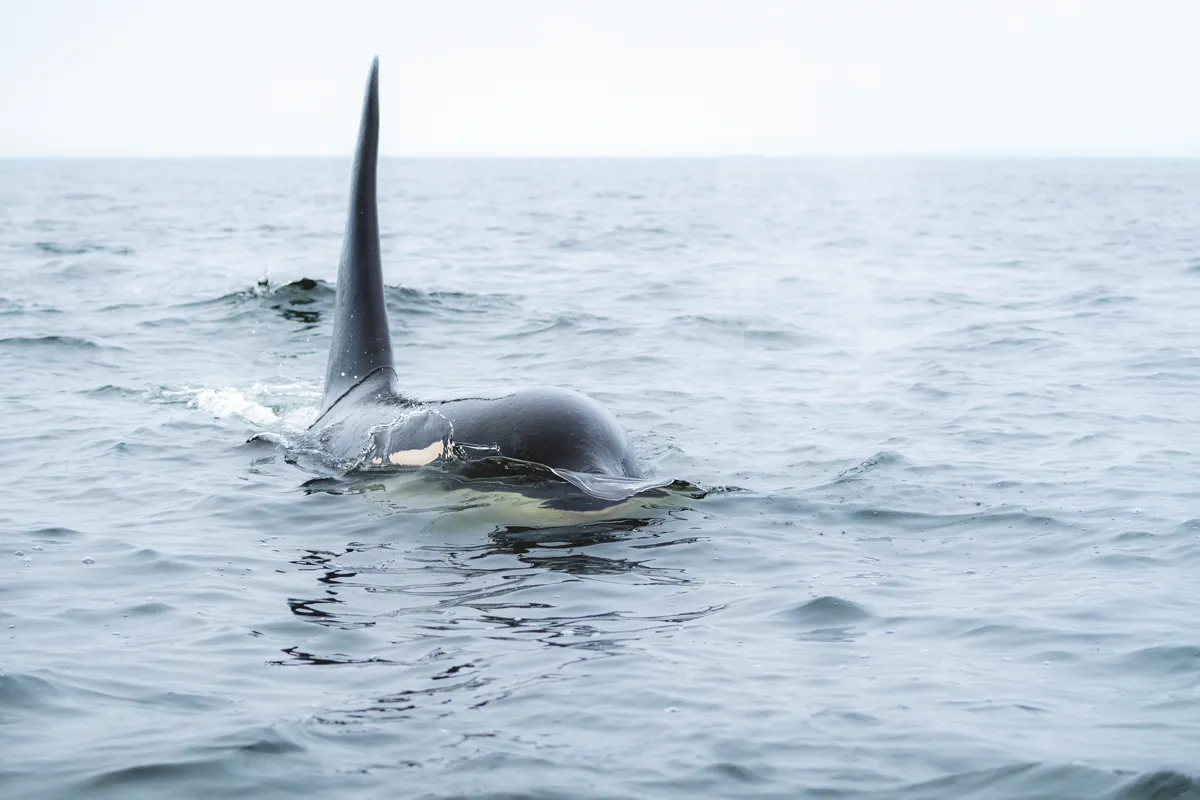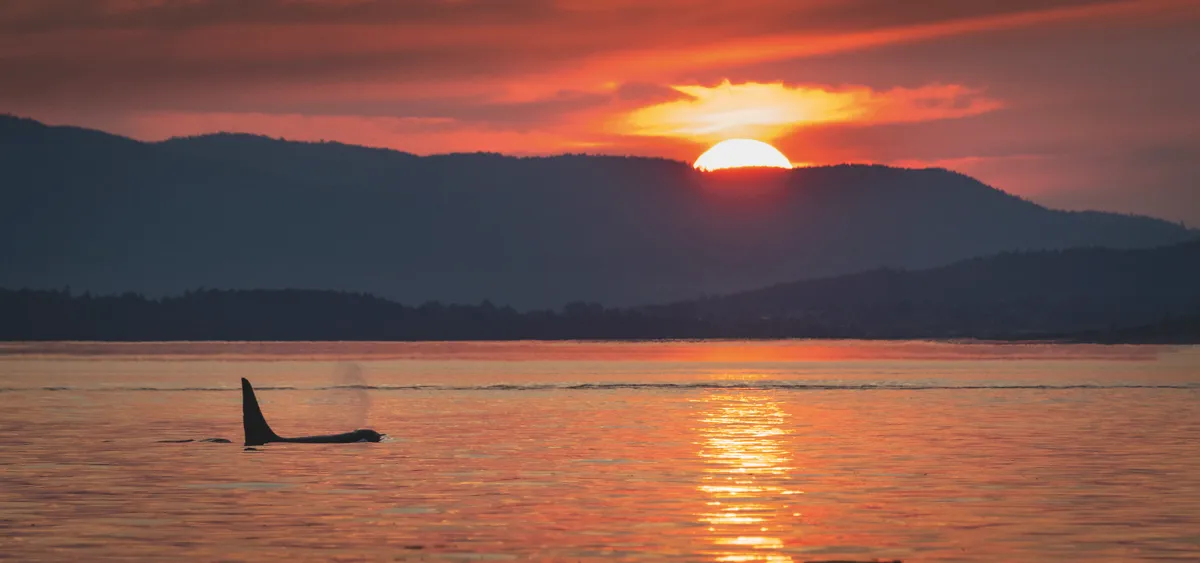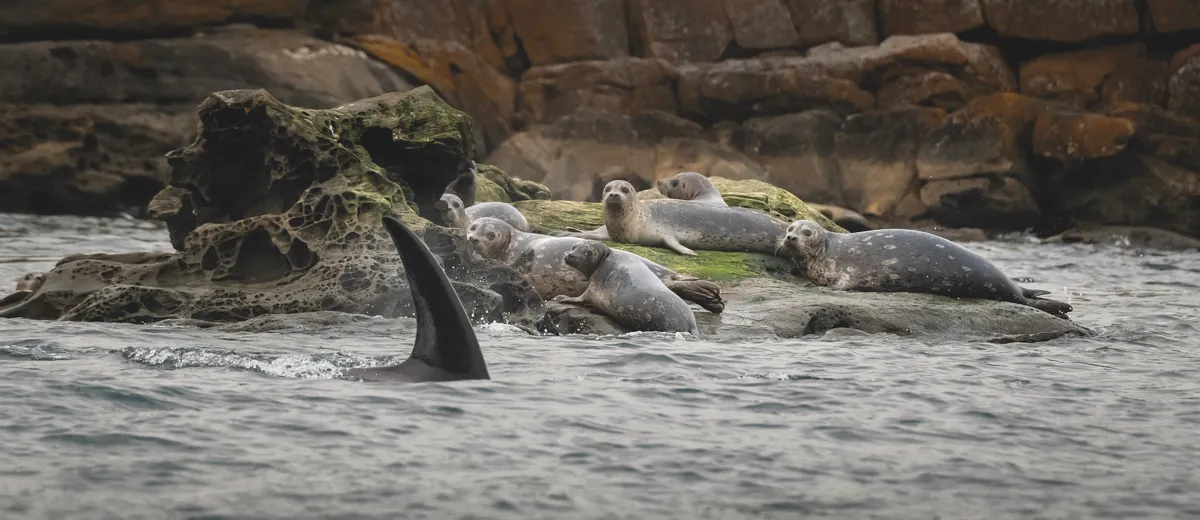Orcas are highly sociable, playful and intelligent. They exhibit a range of behaviour which make them a superb species to capture on camera.
Orcas are widely distributed throughout the world’s oceans, so the issue of where to go and photograph them is really more about accessibility. Most of the photographs in this article were taken in the Salish Sea, in Canadian British Columbia.
The stereotypical orca image that springs to mind is of a pod patrolling the Arctic ice packs, and vast tracts of open ocean, so many are surprised to hear of a pod off British shores. Orcas can therefore be a photographic challenge much closer to home...
Where can I see killer whales in Britain?
Orcas have been recorded all around the British waters, but they are most common in the west and north of Scotland and the northern section of the North Sea.
The Shetland Islands are an orca hotspot with sightings possible year-round. They can be seen inshore from April to October, with the peak in June and July, but in winter they are usually much further offshore. It is worth noting that orcas follow their stomachs, they move with their prey, so it is advisable to check in advance of booking if the location of their annual migration has changed.

Orkney waters can also be productive, and similar to the Shetlands, inshore sightings are best in the summer months. They are also summer visitors to the Inner and Outer Hebrides, and occasionally further south, for example off the coasts of Northern Ireland and Northumberland.
There is also a well-known pod numbering about 14 individuals called the West Coast Community Group. This pod patrols a vast area including Pembrokeshire in Wales, the west coast of Ireland and the west coast of Scotland to the Outer Hebrides.
Read more about orcas:
- Why orcas are more 'caring' than 'killer' whales
- Post-menopausal grandmother orcas make better babysitters
Predators, for me, are among the most compelling animals to photograph. As one of the ocean’s supreme apex predators, orcas are high on my list of target subjects – even though being ocean-based makes photography more difficult.
Adult orcas range from 5 to 8 metres in length and can weigh up to 6 tonnes. The males, which are much bigger than the females, can easily be distinguished by their huge sail-like dorsal fin, up to 1.8 metres in height.
Tips for photographing orcas in Britain

Despite their size, the correct photography equipment is crucial.
A zoom lens is the best way to operate on a small boat. Because the action can often be quite quick, a zoom gives you flexibility to quickly frame the shot, alter the composition, go in tight or zoom out to capture the animal in its environment.
You could use two cameras with different lenses, but I find that switching cameras quickly on a small boat doesn’t really work. You need a safe place to stash the spare camera, where it won’t slip loose with the boat’s movement, and where it won’t be trodden on or knocked by other passengers. It will often take a while to work your way across to this spot, grab the spare camera and safely stash the other, by which time the action is all over!
Patience is required when looking for marine wildlife. Not only are orcas wonderfully camouflaged, but they are also adept at disappearing in an instance beneath the waves.
You can spend up to 10 hours at sea, so forward planning is essential. The correct photography equipment and warm clothing are a must – once you set off, you must have all you need for the day ahead. When visiting colder climates, regulations stipulate that everyone on the boat must wear a total immersion suit, even on a hot day.
Choosing the right lens for wildlife photography

A big zoom such as Nikon’s 200-500mm may seem like an ideal choice, so that you can get tight in on more distant subjects. But just imagine, when handholding a long lens on a small boat bobbing around in the sea, trying to place precisely the focus point on a distant fast-moving orca that is disappearing in and out of the waves and swell! Not easy.
Not only will you miss the focus on many occasions, but there is also motion blur to grapple with, sometimes in poor light conditions, when you can’t push the shutter speed to fast enough levels. If you take too long a lens, there is a danger that when you get back on shore and start to look at what you hope will be prize-winning photos, many will be disappointing. The best choice is not to get too greedy and settle for a mid-range telephoto zoom lens such as an 80-400mm or a 100-400mm.
I can assure you that a sighting of a pod of orca is an experience you will not forget, and to capture it on camera is a joy you can return to!
For more nature photography and camera tips, pick up Richard Barrett's new book Wild World: Photographing Iconic Wildlife (£30, Merlin Unwin Books). It covers in situ photography of nine iconic species, from elephants and tigers to jaguars and chimpanzees.
- Buy nowfrom Amazon UK, Bookshop.org and Waterstones